LG 2023 OLED TV lineup: everything you need to know
Brightness-boosting MLA technology for the G3 OLED, brand new M3 'wireless' TV and more!

What we initially thought might be something of a steady-as-she-goes year for LG's OLED TVs has actually turned out to contain some genuine leaps forward.
First, Micro Lens Array technology has been introduced, resulting in a boost in brightness that many thought impossible. Then there's the brand-new M3 TV, a beauty of an OLED TV with no cables running to the display. There are new C-, B- and A- series OLEDs, too.
Towards the bottom of this page you'll find the full LG 2023 TV range breakdown but before that we'll break down some of the broader technical highlights.
If you just want to know whether LG's new OLED TVs are any good, skip straight to our LG G3 and LG C3 reviews.
New G3 OLED with super-bright Micro Lens Array technology

One criticism that's always been aimed at OLED by some is its relative lack of brightness when compared with backlit TVs. New panel materials and extras such as heatsinks have helped boost brightness in recent years, with last year's G2 being comfortably the brightest OLED TV that LG had ever produced, but that pales into insignificance next to the leap forward that's been made this year with the new G3.
LG says that the new G3 is capable of going 70% brighter than 'traditional' OLEDs such as the new B3, which we believe to be roughly on par, brightness-wise, with 2021's C1.
Fancy some figures? LG says the new G3 is capable of hitting around 2040 nits in its Vivid picture mode, and around 1470 nits in more cinematically accurate presets such as HDR Cinema and Filmmaker Mode. That's a huge step up from the G2, which maxed out at under 1000 nits.
The latest hi-fi, home cinema and tech news, reviews, buying advice and deals, direct to your inbox.
This huge jump has been made possible by the addition of Micro Lens Array technology, which involves a layer of tiny lenses being added to the panel in order to better focus the light being emitted by the OLEDs so that more makes it to the viewer.
Interestingly, only the 55-, 65- and 77-inch versions of the G3 benefit from the 70% increase in brightness. The 83-inch model is just 30% brighter than traditional OLEDs, which we believe means it's unchanged (brightness-wise) compared with last year's equivalent G2.
Does this new MLA technology deliver on its promise? It does indeed, as you can see in our LG G3 review.
'Wireless' M3 OLED TV
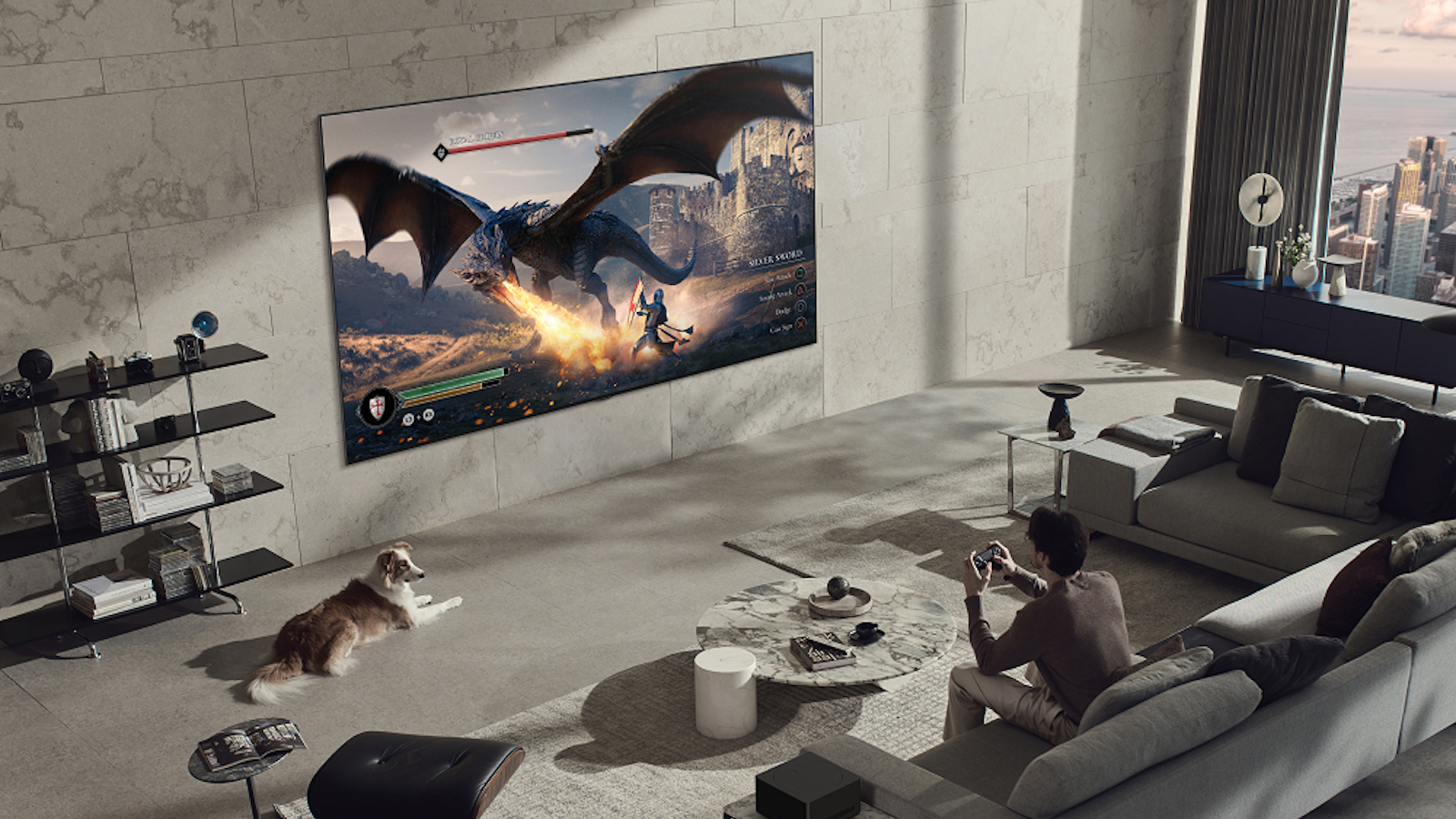
Even more unexpected than the Micro Lens Array of the G3 is the new M3 'wireless' TV. This is an OLED display very much like that of the G3 (including the MLA technology) but with no cables other than power. Instead, all inputs run to a new 'Zero Connect' box, which then sends all video and audio signals to the display wirelessly.
LG claims that the Zero Connect box can be placed up to 30ft away from the display and that 4K/120Hz signals can be transmitted losslessly. Dolby Vision and Dolby Atmos are also supported.
This all sounds extremely impressive in theory, but will there be any loss of picture or sound quality? Will there be added latency for gamers? And just how much will it cost? All questions that remain to be answered, but we certainly very impressed when we conducted our LG M3 hands-on at CES 2023.
New C3, B3 and A3 OLED models
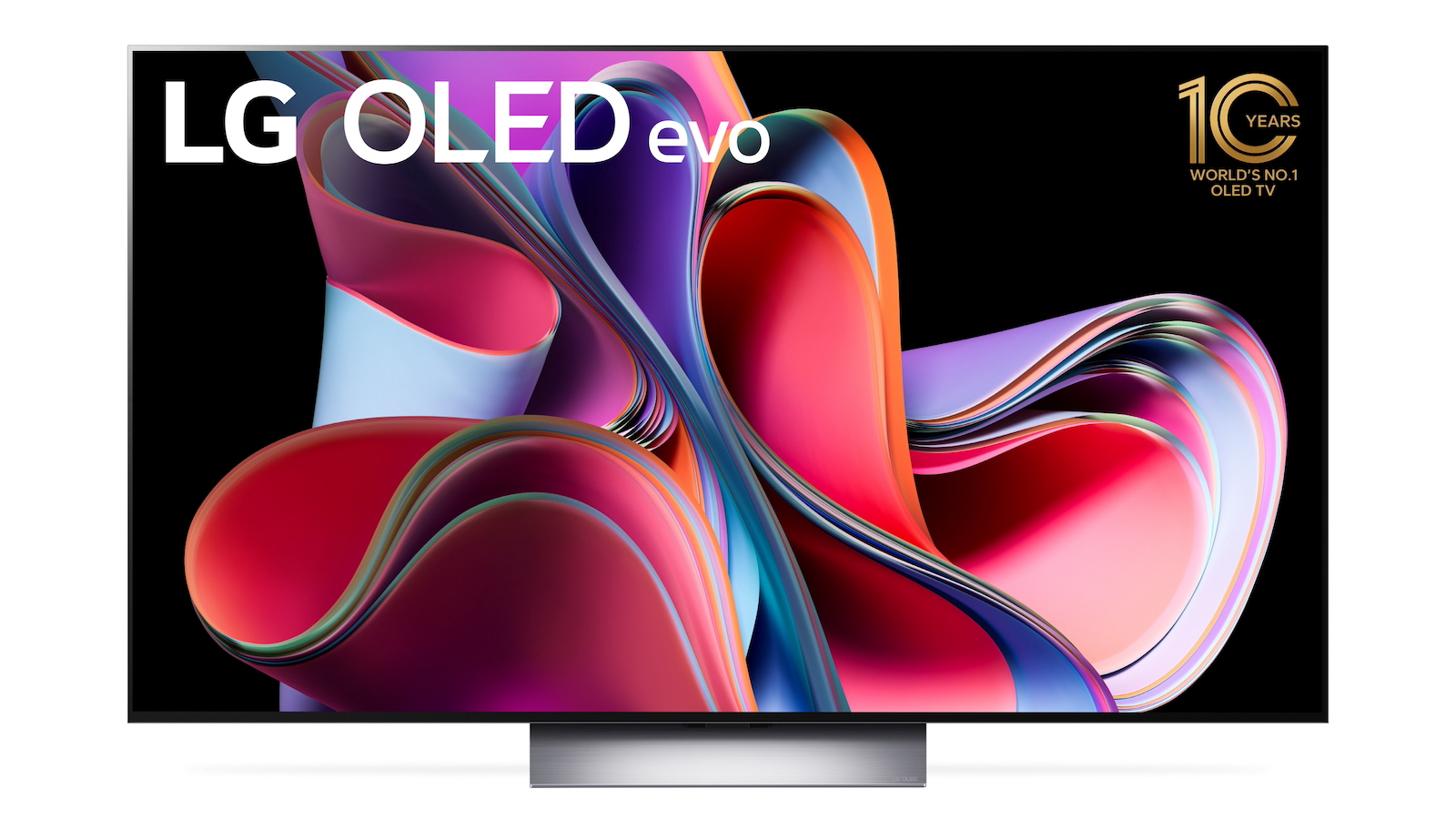
There are, predictably, also new C-, B- and A-series models in LG's 2023 OLED TV line-up. The C3, B3 and A3 fill the same roles as their predecessors and largely have the same specs.
The C3 is an OLED Evo model but it does without the heatsink and new MLA tech of the G3. In other words, it's brighter than the B3 and A3 but not as bright as the G3. In fact, measurable brightness is almost unchanged from last year, though there is a slight perceptual increase thanks to the new Alpha 9 Gen 6 processor's Alpha Reality features, more on which below. As before, this year's C-series model has four HDMI 2.1 sockets and support for essentially every gaming feature under the sun.
Overall, the new C3 is very much like the C2 it replaces, and that's a slight problem. You can read all about it in our LG C3 review.
On to the B3 and, as with the B2, it has a slightly less powerful processor (the Alpha 7 Gen 6) than its C-series sibling, so it lacks the new Alpha Reality features. It's not OLED Evo-designated, either, so is less bright than the C3.
It does, though, boast a 120Hz panel, two HDMI 2.1 ports and support for all of the latest gaming features. In other words, the B-series remains a very tempting option for next-gen gamers who can't stretch to the C3 or who don't require the additional HDMI 2.1 inputs or extra brightness.
The A3 is the entry-level OLED model. It has no HDMI 2.1 sockets and its panel has a 60Hz refresh rate, but those downgrades will be of little significance to those who aren't fairly hardcore gamers.
'Alpha Reality' picture processing
2023's Z-, M-, G- and C-series models, the Z3, M3, G3 and C3, feature a new Alpha 9 Gen 6 processor, which brings with it a number of new picture-enhancing features that are bundled under a new 'Alpha Reality' title.
These new features include AI Super Upscaling Pro, which is designed to upscale sub-4K sources while reducing noise but preserving intentional film grain; OLED Dynamic Tone Mapping Pro, which breaks the image down into 20,000 zones (rather than the 5000 of before) for separate HDR optimisation; Object Enhancer, which sharpens foreground characters and props; and HDR Expression Enhancer, which applies specific tone mapping to those foreground elements.
9.1.2 upmixing, soundbar symbiosis and pseudo support for DTS
On the audio front, the new Alpha 9 Gen 6 chip adds upmixing of all sound formats to 9.1.2 (up from 7.1.2 last year), and a new Auto Balance Control feature that attempts to prevent certain frequencies from being drowned out by others so that, for example, mid-range voices aren't smothered when bass increases.
Taking a leaf out of Samsung's book, LG has also introduced a feature that allows its new TVs and soundbars to work in harmony, so that the TV's speakers aren't simply disabled when the soundbar is connected but instead remain on and are optimised in order to enhance the soundbar's sound.
On the subject of soundbars, while LG's new TVs still don't natively support DTS, they are able to output DTS sound (including Dolby Atmos rival DTS:X) to an external device. That's not terribly useful right now as no streaming service currently features DTS, but DTS:X is coming to certain Disney+ titles later in the year.
Streamlined webOS
While webOS is remaining a full-screen operating system, LG has sought to make it simpler and more stripped-back for 2023. Rather than endless-seeming rows dedicated to different sources and content, the new webOS 23 gathers related features into folders, called 'Quick Cards'. This allows the main home screen to be reduced to just two pages that major on recommendations and most-used apps.
There are also now individual user profiles so that those recommendations are more relevant and personal.
The same flawless gaming specs
Not a lot has changed on the gaming front, but it didn't really need to. Like their predecessors, the new G3 and C3 each have four HDMI 2.1 inputs that support 4K/120Hz, ALLM and VRR. Dolby Vision gaming is once again supported right up to 4K/120Hz, and the HGiG mode, which results in more accurate HDR tone mapping with many games, returns.
No TV in 2022 could match this spec (Samsung's top TVs got close but lacked Dolby Vision support), and that seems set to remain the case in 2023 as the new MediaTek Pentonic 1000 HDMI chipset that will be used by the flagship TVs of brands such as Sony, Panasonic and Philips has just two HDMI 2.1 sockets.
There is one gaming-related improvement being made to LG's 2023 TVs, in the form of a new sub-menu being added to the Game Optimiser interface that allows for the adjustment of sound settings. Honestly, we feel that the Game Optimiser was most useful in its simplest, 2021 form, but perhaps there are gamers who appreciate the multitude of game-related settings.
LG 2023 TV range breakdown
So that's the overall technical outlook of LG's 2023 TV range, but what about the specific models? Scroll down for a full breakdown of the range.
LG Z3 8K OLED Evo TV
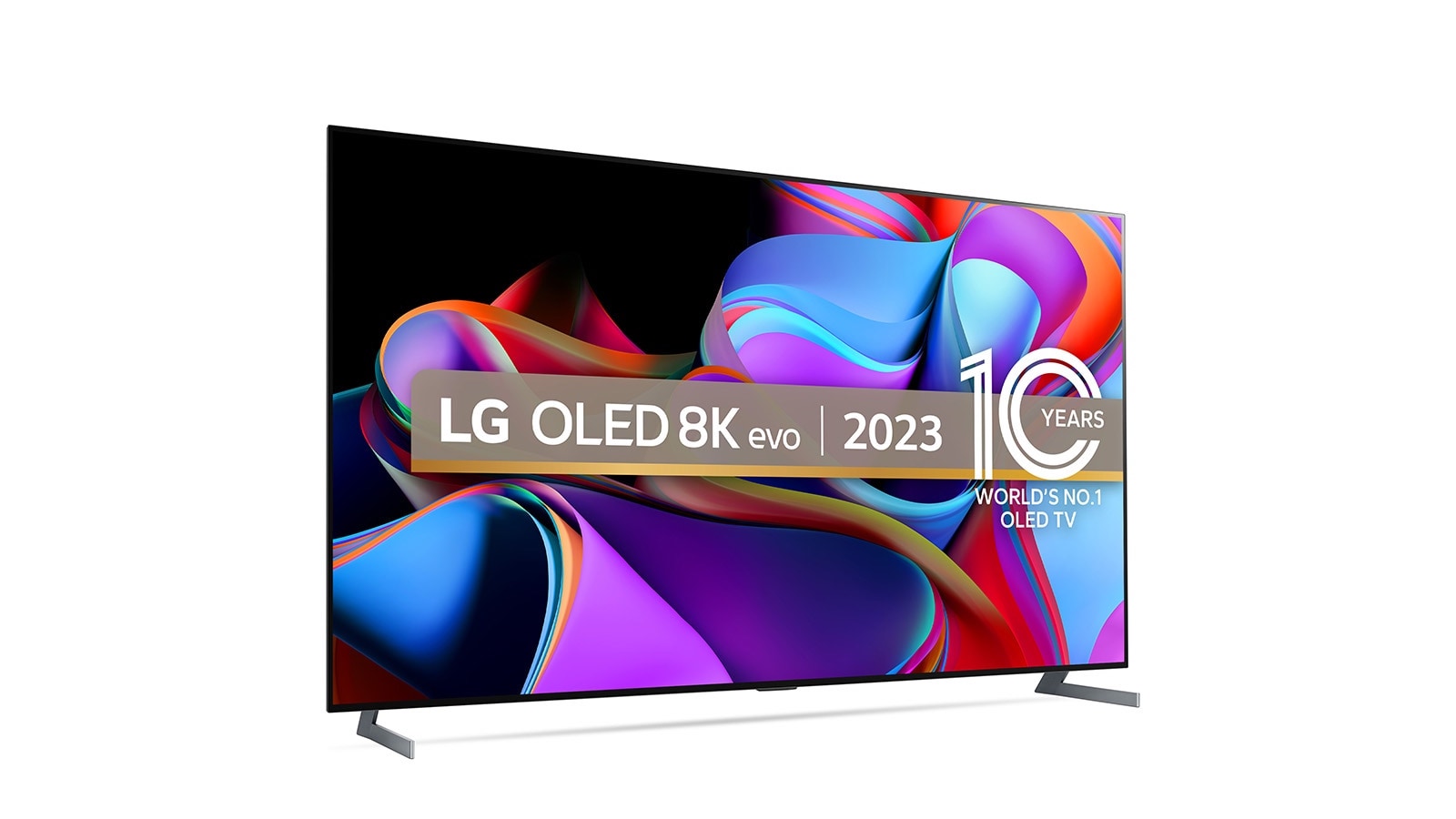
Despite not being designated an OLED Evo model, we found last year's 8K Z2 OLED to be just as bright as the G2 with real-world content in the most accurate picture modes. This year's 8K model, the Z3, does actually get OLED Evo designation so should be brighter still than its predecessor. That said, we understand that it does not feature MLA technology so almost certainly won't be as bright as the new G3.
Overall, we found last year's Z2 performed so similarly to the G2 that it's a hard TV to recommend despite its general excellence, given its vastly higher price and the lack of native 8K content. It will be interesting to find out if the new Z3 fares similarly when we get it into our test labs for a full review.
LG Z3 specs:
- Sizes: 77-inch, 88-inch
- Display type: OLED Evo
- Resolution: 8K
- Processor: Alpha 9 8K Gen 6
- Sound: 4.2-channel, 60W
- HDMI 2.1: Yes (x4)
- Gaming features: 4K 120Hz, VRR, ALLM
LG Z3 launch pricing:
- LG OLED77Z3: £15,000 / $TBC / AU$TBC
- LG OLED88Z3: £25,000 / $TBC / AU$TBC
LG M3 'Wireless' 4K OLED TV
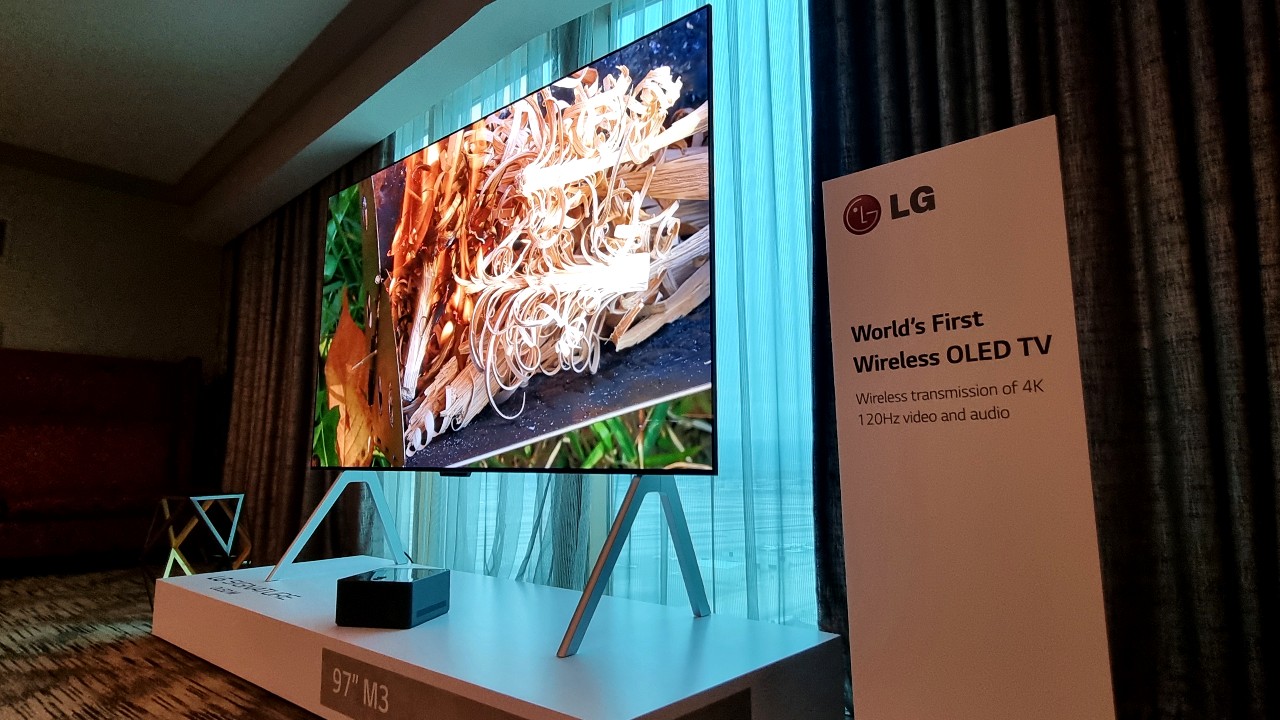
There's a new model at the top of LG's 4K OLED range. The M3 'wireless' TV (also known as the Signature OLED M) is a beautifully minimalist TV with no cables running to the display other than power. All connections are instead handled by a separate 'Zero Connect' box that then wirelessly and (apparently) losslessly transmits the relevant picture and sound signals to the screen. Formats up to 4K/120Hz are supported and the display and box can be positioned up to 30ft away from one another.
We've already seen the M3 in action and, in a demo of the Mad Max: Fury Road 4K Blu-ray, the wireless transmission did indeed appear seamless – even when the LG representative stood directly in front of the transmitter box.
In terms of display specifications, the M3 is very much like the G3, right down to the 77-inch model having the same Micro Lens Array technology, which apparently results in a 70% increase in brightness over 'traditional' OLED TVs. The 83-inch and 97-inch models are believed to not have MLA tech so are said to be 30% brighter than traditional OLED TVs, but the 97-inch model used for our demo still looked gorgeous in action.
While official pricing is yet to be revealed, an LG spokesperson told us that the M3 will be positioned between the new G3 and Z3.
LG says the new wireless TV will be available by the second half of 2023. We'll be getting it into our test labs for a full review just as soon as possible. Until then, check out our LG M3 hands-on.
LG M3 specs:
- Sizes: 77-inch, 83-inch, 97-inch
- Display type: OLED Evo w/ MLA (77-inch model only)
- Resolution: 4K
- Processor: Alpha 9 Gen 6
- Sound: TBC
- HDMI 2.1: Yes (x3)
- Gaming features: 4K 120Hz, VRR, ALLM
LG M3 launch pricing:
- LG OLED77M3: £TBC / $TBC / AU$TBC
- LG OLED83M3: £TBC / $TBC / AU$TBC
- LG OLED97M3: £TBC / $TBC / AU$TBC
LG G3 4K OLED Evo TV
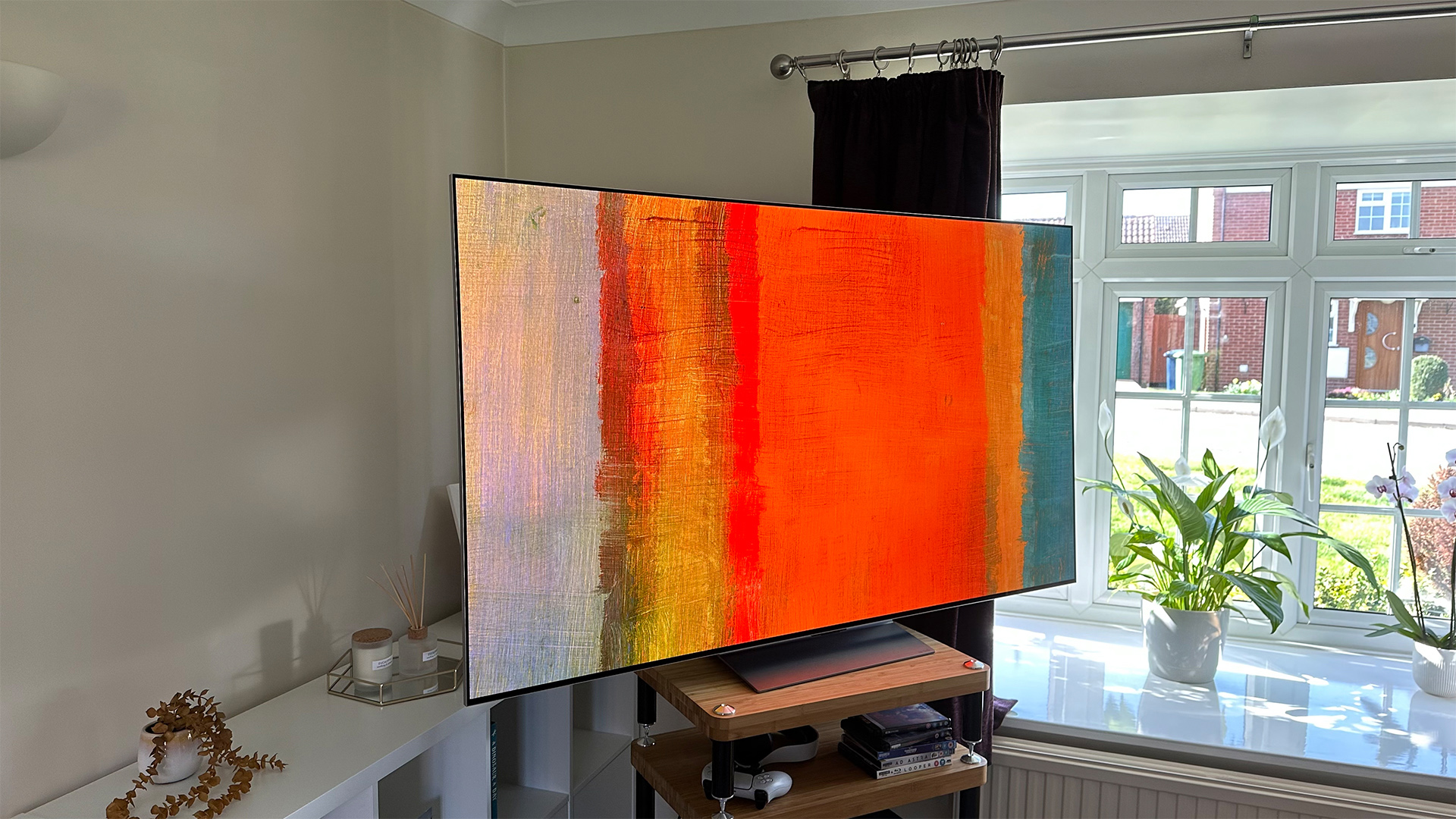
Since 2021, LG's G-series models have sat above the C-series not only thanks to their so-called Gallery design, which gives the TVs the look of smart picture frames, but also thanks to their extra brightness.
LG has in fact widened this brightness gap for 2023, with the new G3 getting an extra new panel feature that the C3 does without. As described above, this new panel feature is called Micro Lens Array, which is essentially a layer of tiny lenses that better focus the light being emitted by the OLEDs so that more of it reaches the eye. Like the G2, the G3 also benefits from a heatsink that allows it to be driven brighter than TVs from the C-series and below.
It is worth noting, though, that only the 55-, 65- and 77-inch versions of the G3 benefit from the new, brightness-boosting MLA tech, and that the 83- and 97-inch models will be roughly as bright as other standard OLED Evo models such as the C3.
Having now tested the G3, we can confirm that it's superb. That extra brightness is clear with real-world HDR content, which isn't just brighter but also has more vibrant colours. All told, that equates to a significantly more dynamic and more impactful performance. It's not quite the perfect TV, though, so do check out our exhaustive LG G3 review.
LG G3 specs:
- Sizes: 55-inch, 65-inch, 77-inch, 83-inch, 97-inch
- Display type: OLED Evo w/ MLA (55-, 65- and 77-inch models only)
- Resolution: 4K
- Processor: Alpha 9 Gen 6
- Sound: 4.2-channel, 60W
- HDMI 2.1: Yes (x4)
- Gaming features: 4K 120Hz, VRR, ALLM
LG G3 launch pricing:
- LG OLED55G3: £2600 / $2500 / AU$4195
- LG OLED65G3: £3500 / $3300 / AU$5295
- LG OLED77G3: £5000 / $4500 / AU$8395
- LG OLED83G3: £7500 / $6500 / AU$10,995
- LG OLED97G3: £TBC / $TBC / AU$TBC
LG C3 4K OLED Evo TV

While the G3 has that fancy new MLA technology to get excited about, the new C3 is very similar to the outgoing C2 in terms of hardware. It does, though, benefit from the new Alpha 9 Gen 6 processor and its Alpha Reality processing, as well as the new streamlined version of the webOS operating system.
The slight stagnation between the C2 and C3 is undeniably disappointing, particularly as the new model has also launched at a higher price than its predecessor did.
We've little doubt that the C3 will still be the most popular model in LG's 2023 OLED range but there are better options from other manufacturers. Read all about that in our full LG C3 review.
LG C3 specs:
- Sizes: 42-inch, 48-inch, 55-inch, 65-inch, 77-inch, 83-inch
- Display type: OLED Evo
- Resolution: 4K
- Refresh rate: 120Hz
- Processor: Alpha 9 Gen 6
- Sound: 2.2-channel, 40W (48 inches and above) / 2.0-channel, 20W (42 inches)
- HDMI 2.1: Yes (x4)
- Gaming features: 4K 120Hz, VRR, ALLM
LG C3 launch pricing:
- LG OLED42C3: £1500 / $1400 / AU$2595
- LG OLED48C3: £1600 / $1500 / AU$2895
- LG OLED55C3: £2100 / $1900 / AU$3295
- LG OLED65C3: £2900 / $2600 / AU$4295
- LG OLED77C3: £4000 / $3600 / AU$6795
- LG OLED83C3: £6500 / $5300 / AU$8995
LG B3 4K OLED TV
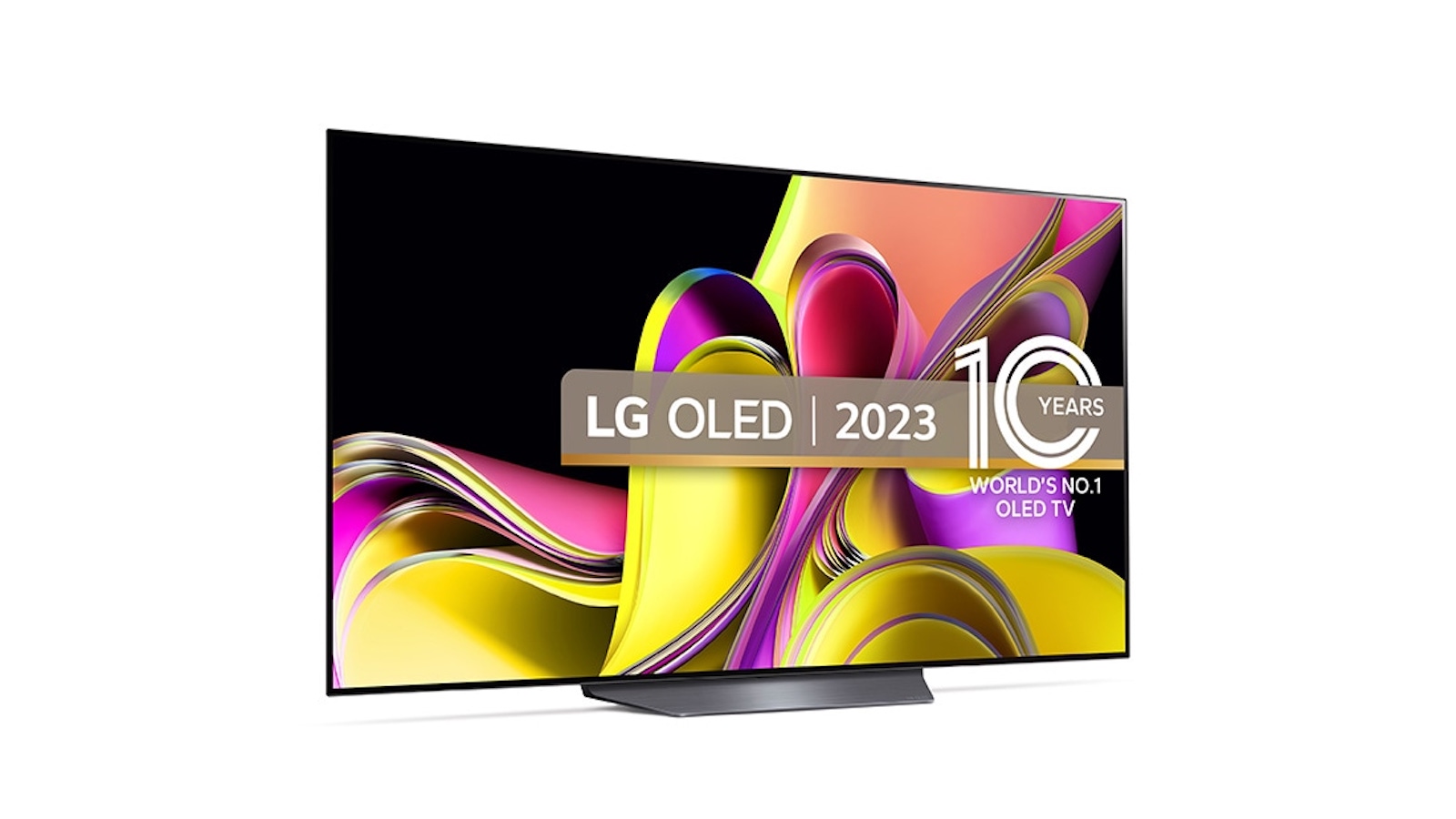
The B3 is LG's entry-level model for those who still want support for all of the latest next-gen gaming specs over two HDMIs. It's not an OLED Evo model, so it goes less bright than the TVs above, and it has a slightly less advanced processor that doesn't support the new Alpha Reality picture enhancement features. Priced correctly, though, the B3 could be a great buy for certain people.
As ever, we'll wait until the TV is in our test labs for a full review before we pass judgement.
LG B3 specs:
- Sizes: 55-inch, 65-inch, 77-inch
- Display type: OLED
- Resolution: 4K
- Refresh rate: 120Hz
- Processor: Alpha 7 Gen 6
- Sound: 2.0-channel, 20W
- HDMI 2.1: Yes (x2)
- Gaming features: 4K 120Hz, VRR, ALLM
LG B3 launch pricing:
- LG OLED55B3: £1900 / $1700 / AU$3145
- LG OLED65B3: £2700 / $2400 / AU$4095
- LG OLED77B3: £3800 / $3300 / AU$6495
LG A3 4K OLED TV
If you're not bothered about next-gen gaming specs such as 4K/120Hz and VRR, the new A3 could be well worth a look. This is essentially a B3 but without any HDMI 2.1 sockets and with a 60Hz (rather than 120Hz) panel.
Unfortunately, LG has decided not to launch the A3 in the UK and it's not yet available in the US or Australia. There's a chance it could end up as a Europe-only model. We've asked LG for clarification and will report back once we've had a response.
LG A3 specs:
- Sizes: 48-inch, 55-inch, 65-inch, 77-inch
- Display type: OLED
- Resolution: 4K
- Refresh rate: 60Hz
- Processor: Alpha 7 Gen 6
- Sound: TBC
- HDMI 2.1: No
- Gaming features: ALLM
LG A3 launch pricing:
- LG OLED48A3: £n/a / $TBC / AU$TBC
- LG OLED55A3: £n/a / $TBC / AU$TBC
- LG OLED65A3: £n/a / $TBC / AU$TBC
- LG OLED77A3: £n/a / $TBC / AU$TBC
MORE:
Read our full LG G3 and LG C3 reviews
Here are the best TVs you can buy right now
Tom Parsons has been writing about TV, AV and hi-fi products (not to mention plenty of other 'gadgets' and even cars) for over 15 years. He began his career as What Hi-Fi?'s Staff Writer and is now the TV and AV Editor. In between, he worked as Reviews Editor and then Deputy Editor at Stuff, and over the years has had his work featured in publications such as T3, The Telegraph and Louder. He's also appeared on BBC News, BBC World Service, BBC Radio 4 and Sky Swipe. In his spare time Tom is a runner and gamer.

